By: Mudassar Bashir
Gul Begum was better known as 'Rani Gul Begum'. She was one of the courtesans from Amritsar. Maharaja Ranjit Singh was quite open about his relationships with courtesans throughout his life. A courtesan called Moraan was his favorite for a very long time during his reign over Lahore. She used to be known as 'Rani Moraan' in the court and city. One can still see a few buildings built by her in Punjab including a mosque in Papar Mundi Lahore. After her death, Moraan was buried next to Hazrat Tahir Bandagi in the Miani Sahib Graveyard.
After the death of Moraan, Laxmi Devi and Gul Begum became closer to the Maharaja. In those days, a ‘Tawaif’ was a was a woman who belonged to a family of a professional musicians and singers, usually going back over several generations. Because of their proficiency in singing and etiquette, many a times the rajas, noblemen and rich men would marry them or acquire them as slave girls. They were not professional prostitutes. Prostitution among this class seems to have begun around the middle of the 19th century. Before that, it was classical music, theatre and classical dance that gave them their status and their livelihood.
The Maharaja had relations with Rani Gul Begum during Moraan’s life; but after her death, his attachment to her grew, to the extent that he decided to marry her.
The Maharaja was 51 years old at that time. In 1831 he dressed as a bridegroom and went through all the rituals of marriage. The wedding was attended by prominent sardars, British and French generals and the rajahs of other states. The Maharajah took the wedding party to Amritsar. the wedding celebrations included both Sikh customs and Muslim traditions. Gul Begum moved to Lahore from Amritsar, and was given the title ‘Rani Gul Begum’. Maharaja got a big haveli (palatial house), furbished for her in the Kashmiri Gate area of the Rang Mehal bazaar. Now a days, the haveli hosts a girls’ school. Even today, the residential area is called ‘Haveli Gul Begum’. Gul Begum was also passionate about building estates. She built an excellent garden in Mozang, Lahore. This garden came to be called, the ‘Bagh Gul Begum’
Pools, fountains and corridors were built; in the midst of these an elegant mosque was constructed. Gul Begum started the construction of the garden in 1272AH/1855 AD and finished it in her lifetime. The Rani had no children. She adopted one Sardar Khan as her son in her life time. She passed away in 1282AH/1866 AD.
Details of the Building :
If you walk down the road alongside Chauburji Crossing, you will pass the building of Surrayya Azeem Trust Hospital on your left. If you continue ahead past the hospital the road will lead to Miani Sahib Graveyard. A little way down this road the enclosure of Mirza Tahir Bandahgi’s shrine skirts the edge of the road. Behind it is the area of Gul Begum Garden. If you come from Mozang Square to Chauburji, the shrine of Wasif Ali Wasif is on roadside.
Adjacent to the tomb a street leads toward the right and after some distance there is another street on the right. As you approach the end of this street the walls of Gul Begum Garden become visible.
There is a door within these walls which has been sealed with mud bricks. Close by, on an inner street there is the main gate of the east side of the garden. The gate stretches across two storeys; the lower part has been sealed with bricks while on the upper storey, brick sun-shades can be seen.
Western gate in street with the edge of tomb"s mosque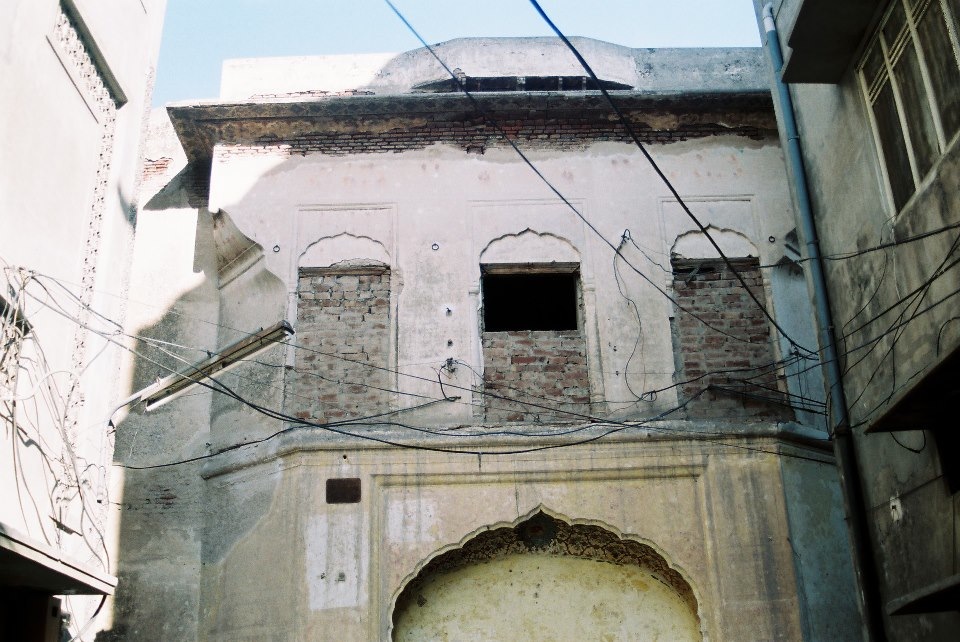
Toward the north of the main gate the old mosque exists even today. The mosque has been white washed to erase all marks of the times gone past. There is a wall adjacent to the mosque which children climb over to play cricket inside the garden.
I also climbed over the wall and managed to get into the garden, although I did seek prior permission of the mosque imam.
In the very middle of the garden a cemented pitch has been laid out which is used by the local lads to play cricket. The inner compound of the garden appears to span an area of no less than three kanals (1500 square yards). In the compound one can spot several old trees. Along the walls of the garden, which skirt the adjacent houses, one can see heaps of rotting rubbish. In the very centre of the garden, by erecting small walls around a raised platform, a mausoleum has been built where the remains of the adopted son of the Rani - Sardar Khan- are interred. Adjacent to this, is another grave. The raised portions of all these graves have been embellished with black and green stones. The whole place is thickly dotted with shrubs and wild bushes, some of which serve as abodes of stray cats.
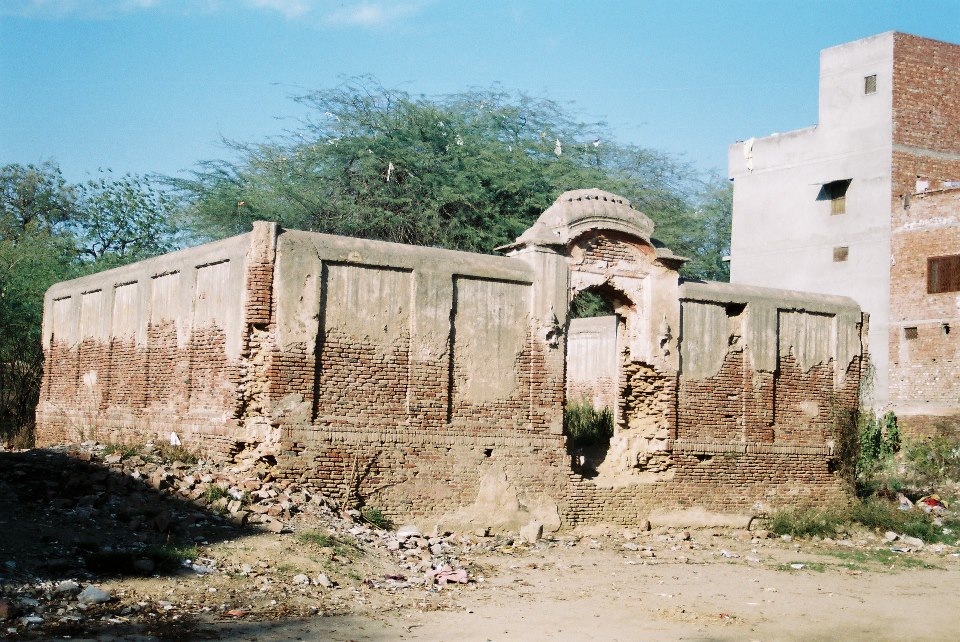
Boundary wall around the grave of sardar khan
Towards the south are the graves of Sardar Khan and his offspring.
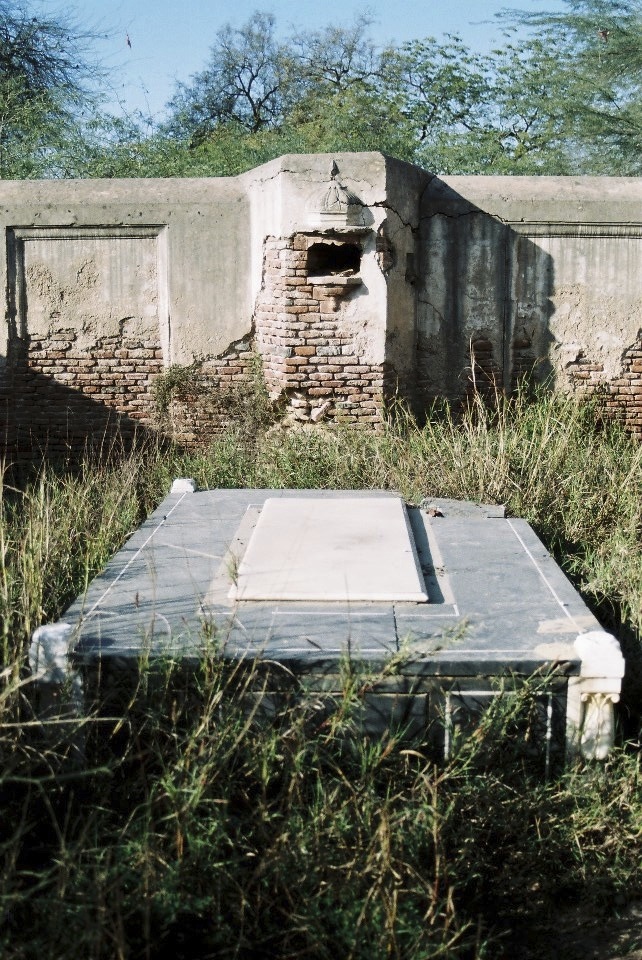
Grave of sardar khan
Next to it is a square building with a dome on top. The door to this building is locked. The Rani is buried here, along with her physician, servants and others.
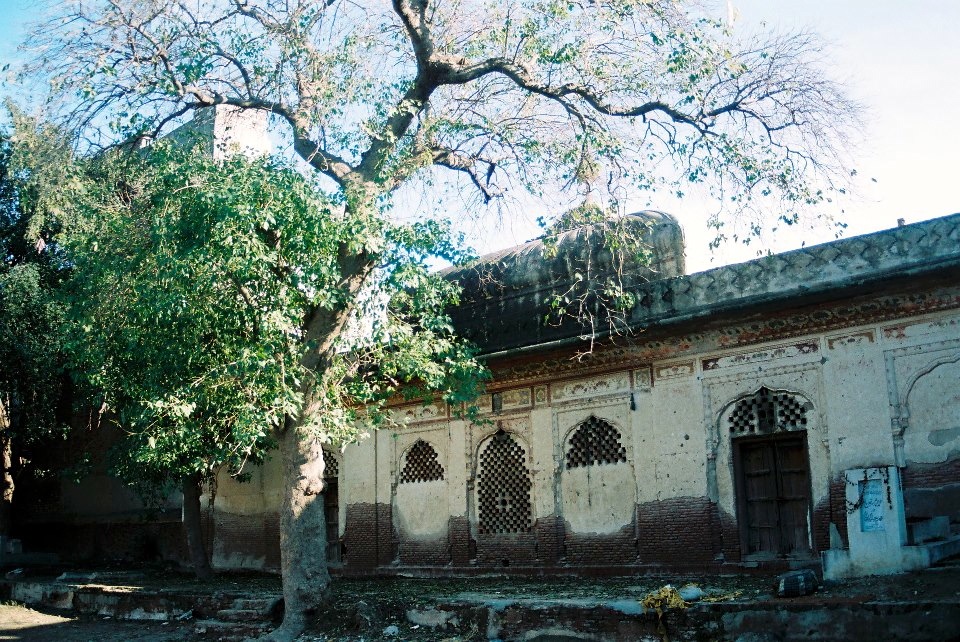
Main entrance to grave of gul begum
This door seems not to have been opened for several years. If you look inside, there are cobwebs, dust and termite mounds everywhere. Professor Aslam in his book, ‘Khuftagan e Khak e Lahore’ (p38) gives the inscription on the tombstone as follows:
رانی گل بیگم بنت شیخ محمد اختر
زوجه
مهاراجه رنجیت سنگھ بہادر سورگباشی
(Rani Gul Begum, daughter of Shaikh Mohammad Akhtar,
Wife of
The late Maharaja Ranjit Singh Bahadur)
Toward the north of this building, above and to the side of a wooden door is a plaque, on which is the following Persian inscription:
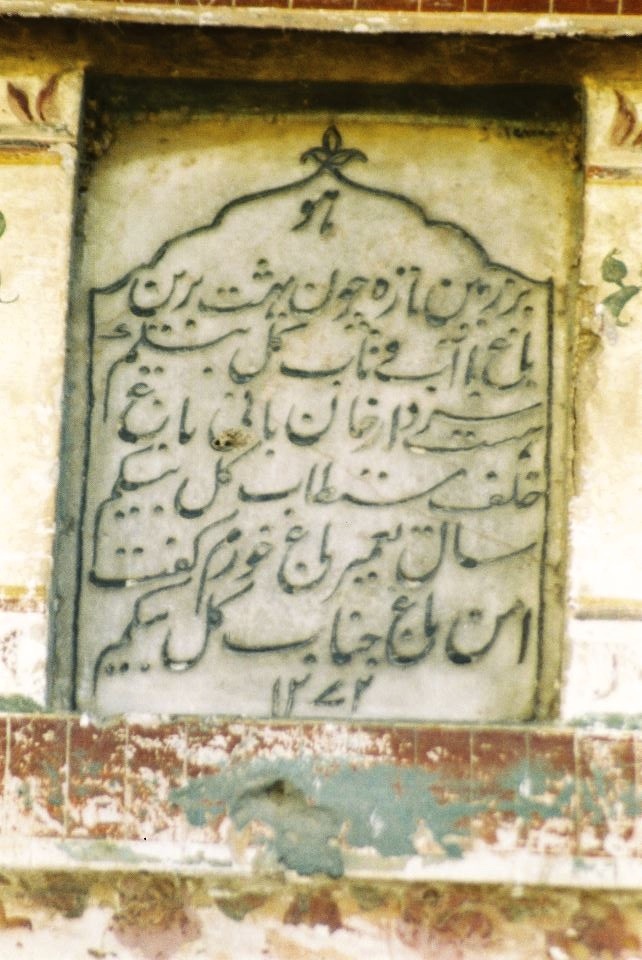
Inscription on the entrance gate to grave
��و
بر زمین تازه چون بهشت برین
باغ با آب و تاب گل بیگم
ہست سردار خان بانی باغ
خلف مستطاب گل بیگم
سال تعمیر باغ خورم گفت
امن باغ جناب گل بیگم
1272
(Fresh at all times, like the exalted paradise
Is the Garden of Gul Begum, in all its glory
The founder of this Garden is Sardar Khan,
The pious heir of Gul Begum
The year of its construction was happily described,
as ‘the peace of the Garden of Gul Begum’ )
(1272)
Gul Begum owned a big estate during the times of the Maharaja. After the fall of the Sikh Government, the British gave her a stipend of Rs 1200 per month. This was a large amount in those days. In addition, she would receive income from the inherited estates of Ranjit Singh. All this wealth was inherited by Sardar Khan and his descendants who still live in houses on this estate. The irony is that although all the residents benefit from living here and proudly proclaim Sardar Khan as their ancestor, nobody is willing to express any affiliation with Sardar Begum.
As regards the garden itself, in this congested area, it is incumbent upon the government to look after it. The public should have access to it, so that people can see the old building and can offer prayers for the Rani and others in buried in the mausoleum.